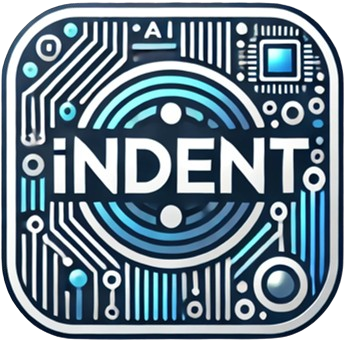Understanding .gitattributes in Git in order to see if I can use it for read only files
Why Read only files
When you form a group and you want the participants to use certain files for their learning, you want those files keep their fidelity with their usage instructions. May be there are otherways to accomlish this.
I thought I would ask, how to make these files "read only".
Immediate answer was there was no such direct path. What was suggested then is to use the .gitattributes file and some of its features indirectly.
May be useful. So I asked ChatGPT to create an article out of this.
So, read and make what you may.
Introduction
.gitattributes is a powerful configuration file that allows developers to control how Git handles files in a repository. By defining specific rules, .gitattributes helps maintain consistency in line endings, prevents merge conflicts, optimizes diffs, and manages binary files effectively.
This article will explore the various use cases of .gitattributes, how to configure it, and provide real-world examples to enhance your Git workflow.
How to Use .gitattributes
To set up .gitattributes in a Git repository:
- Create a file named
.gitattributesin the root of the repository. - Add rules to define how Git should treat specific files.
- Commit the
.gitattributesfile to the repository to ensure all contributors adhere to the same settings.
Common Use Cases
1. Enforcing Line Endings (CRLF vs LF)
Different operating systems use different line endings. To maintain consistency, .gitattributes can enforce line-ending rules:
*.txt text eol=lf # Use LF (Linux/macOS) *.bat text eol=crlf # Use CRLF (Windows)
✅ Effect: Ensures files have consistent line endings, preventing unnecessary changes.
2. Marking Files as Binary (Disabling Diffs)
Git normally tries to diff all files, but for binary files, this isn't useful. You can mark them as binary:
*.png binary *.jpg binary *.zip binary
✅ Effect: Prevents Git from displaying diffs for these files.
3. Preventing Merge Conflicts for Specific Files
For configuration files that should never be merged automatically, use:
*.lock merge=ours # Always use "ours" version in conflicts
✅ Effect: Ensures Git always keeps the current version of the file in merge conflicts.
4. Ignoring Changes to Specific Files (Read-Only Behavior)
To prevent Git from tracking differences for certain files while keeping them in the repository:
config.yaml -diff -merge
✅ Effect: Changes won’t appear in git diff, and the file remains unaffected by merges.
5. Customizing Git Diffs for Specific File Types
Git can be configured to use specialized diff drivers for certain file types:
*.md diff=markdown *.json diff=json
✅ Effect: When running git diff, Git will use a specialized diff viewer for these file types.
6. Large File Handling with Git LFS
For large files, Git LFS (Large File Storage) prevents repository bloat:
*.zip filter=lfs diff=lfs merge=lfs -text
✅ Effect: Large files are stored efficiently without clogging the repository.
Merge and Diff Options in .gitattributes
Git provides several options for handling diffs and merges. Some of the key options include:
- merge=ours: During a merge conflict, always keep the current branch's version of the file.
- merge=theirs: During a merge conflict, always take the incoming branch's version of the file.
- merge=union: Merges both changes, useful for log files or structured text.
- diff=none: Disables diffs for a file, making Git ignore changes in
git diff. - binary: Treats files as binary, preventing textual diffs.
✅ Effect: These settings help automate conflict resolution and improve merge strategies.
Using .gitattributes for Read-Only Files
If you want to make files effectively "read-only" in Git (i.e., preventing accidental changes while keeping them in the repository), you can use the following:
*.config -diff -merge *.json -diff -merge *.env -diff -merge
✅ Effect:
- Prevents diffs: Changes to these files won't appear in
git diff. - Prevents merges: Files will not be affected during merges.
- Useful for config files: Protects environment files, lock files, and generated data from unnecessary modifications.
To reinforce read-only behavior at the system level, you can also change file permissions manually:
chmod 444 config.yaml
This ensures that Git users do not modify the file unless explicitly allowed.
Example .gitattributes File
# Force Unix-style line endings * text=auto eol=lf # Ignore diffs for JSON and lock files *.json -diff -merge *.lock -diff -merge # Treat images as binary files *.png binary *.jpg binary *.gif binary # Prevent merge conflicts in package-lock.json package-lock.json merge=ours # Use Git LFS for large files *.zip filter=lfs diff=lfs merge=lfs -text
✅ Effect: Ensures clean merges, optimized diffs, and efficient large file handling.
Where is .gitattributes Stored?
-
Per-Repository: The
.gitattributesfile is stored in the repository itself and affects all contributors. -
Global (For All Repositories on a Machine): You can set a global
.gitattributesin:~/.config/git/attributes
or on Windows:
C:\Users\YourUser\.gitattributes
References
- Git Documentation - gitattributes - This link provides the official Git documentation on
.gitattributes. - GitHub Guide to .gitattributes - This link leads to GitHub's
.gitattributesfile in theirgitignorerepository. - Git Large File Storage (LFS) - This link directs to the official Git LFS website, explaining how to handle large files in Git repositories.
- Understanding Git Merge Strategies - This link provides a section from the Pro Git book on basic branching and merging in Git.
Conclusion
.gitattributes is a versatile tool that helps developers manage file behaviors in Git. Whether it's ensuring consistent line endings, handling binary files, or preventing merge conflicts, mastering .gitattributes can significantly enhance your Git workflow.
Would you like to see .gitattributes configurations for a specific use case? Let us know! 🚀
